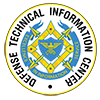NRL Demonstrates Fiber Laser Sensor Technology for Structural Health Monitoring
Researchers at the U.S. Naval Research Laboratory (NRL), Optical Sciences Division, in collaboration with the laboratory’s Material Science Division, for the first time have demonstrated successful detection of acoustic emission from cracks in riveted lap joints using a distributed feedback fiber laser-acoustic emission sensor. “An automated, in-situ structural health monitoring (SHM) system, capable of monitoring












